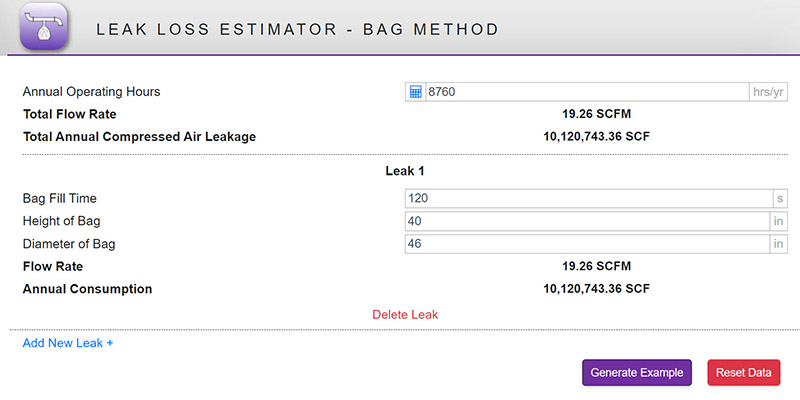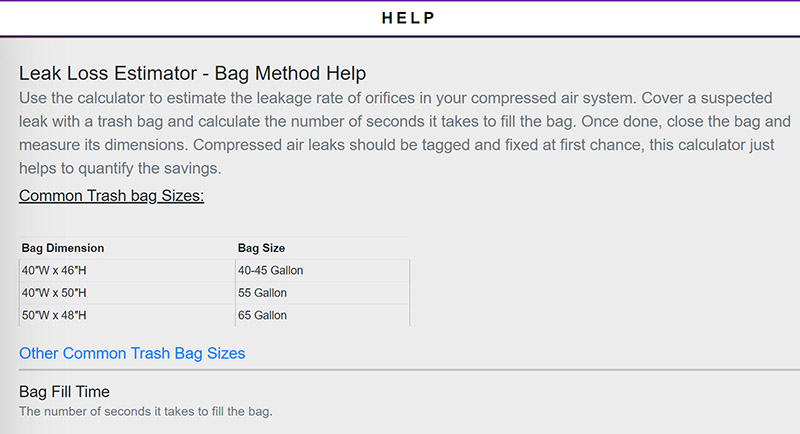Have you ever wandered through your plant on a down day and found that it sounded like a pit of vipers with noticeable compressed air leaks hissing away constantly? Have you wondered how much money you are losing because of the leaks? Now you can answer that question armed with a simple trash bag and a recently developed calculator tool from the US Department of Energy called MEASUR.

The test for each significant leak is simple; cover the leak with the mouth of a trash bag and time how long it takes to fill. Program in the dimensions of the bag at the end of the test and the calculator will show the estimated leak rate and calculate total volume lost per year.

You can then go to a compressed air reduction calculator to estimate how much you will save when you fix the leak. There is even a tool to help you track the results of any full leakage survey.
To download the free tool, simply visit this site: https://www.energy.gov/eere/amo/measur
It’s getting easier and easier to save energy by reducing compressed air leaks!
Filed Under: Components Oil Coolers, Compressed Air Technologies, Pneumatic Tips